In the days of the Buddha, kings, leaders, and devoted laypeople established monasteries and temples as heartfelt offerings. These sacred spaces not only provided a nurturing home for the Buddha and the noble Arhats to dwell and practice in but also served as welcoming havens for sincere seekers yearning to listen to the enlightening teachings of the Buddha and his disciples. Today, the tradition of creating temples and monasteries endures, with Buddhists generously contributing their resources and labor to build the Sakyamuni Buddhist Meditation Center—a sanctuary for monks and practitioners to cultivate Vipassana meditation and share the profound wisdom of the Dhamma.
The Sakyamuni Buddhist Meditation Center is immensely grateful to have had Venerable Khippapañño Kim Trieu as its Abbot since its inception. A highly experienced monk with an extensive understanding of Dhamma studies and practices, he has been blessed with the wisdom of esteemed mentors such as Venerable Vansarakkhita Maha Thera (Hộ Tông) and Venerable Bodhi Maha Thera (Giác Quang). Moreover, he has studied Vipassana meditation under numerous renowned meditation masters, including Venerable Ratthapala, Venerable Taungpulu KyaukSin, Venerable Mahāsī, Venerable Shwe Oo Min, Munindra, S.N Goenka, and Dipa Ma. It is genuinely remarkable that he is among the rare Vietnamese meditation masters who possess expertise in all four Vipassana methods: Mindfulness of the Body, Mindfulness of Sensations, Mindfulness of Mind, and Mindfulness of Dhamma.
For over 35 years, the Sakyamuni Buddhist Meditation Center has warmly welcomed monastic and lay practitioners from all walks of life, providing a tranquil and pure environment for the practice of Vipassana meditation and the study of the Buddha’s teachings. Under the guidance of Venerable Khippapañño Kim Trieu, the center has blossomed from its humble beginnings to encompass a Main Hall, a Monastery, a Meditation Hall, a Stupa for venerating the Buddha and the Arhats, and statues of revered Meditation Masters. The center continues to offer a peaceful refuge for all individuals seeking inner peace and spiritual growth through the transformative practice of Vipassana meditation.
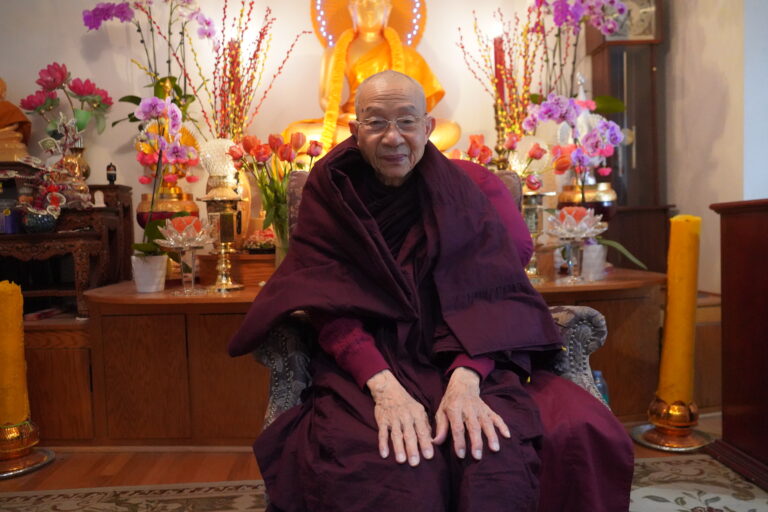
Background
In 1982, as Buddhists in the Eastern United States sought a location to establish the Jetavana Vihara Temple in Washington DC, Venerable Pháp Tông invited Venerable Khippapañño Kim Triệu to Southern California to guide a Vipassana meditation retreat for Vietnamese Theravada Buddhists. Encouraged by the positive results of these meditation sessions and with the support of the Sangha, the devotees came together to find a tranquil location for a meditation center that would foster the Buddha’s teachings in harmony with the Theravada tradition.
Creating a meditation center in a foreign country is a complex undertaking. In addition to the usual challenges, such as funding, location, facilities, and development potential, unexpected situations sometimes arose, necessitating careful deliberation. After years of exploration, the Buddhists obtained a property on Winters Lane, which included two private residences nestled on a generous 2.27-acre parcel on a small hill overlooking the southwest city of Riverside. This acquisition marked the birth of Southern California’s first Theravada Buddhist meditation center: the Sakyamuni Meditation Center, also known as the Sakyamuni Buddhist Meditation Association. Venerable Khippapañño Kim Triệu was invited to serve as the abbot and meditation master, and the center officially began its activities on July 15, 1988.
The name “Sakyamuni” pays tribute to the Sakyamuni Buddha Statue in Vung Tau, constructed by the Vietnamese Theravada Buddhist Association in 1963.
Project Construction
1. Meditation Hall Repair and Construction
Initially, the two existing homes on the property functioned as the primary venues for the Sakyamuni Meditation Center’s activities. As devotees became familiar with Vipassana meditation and the number of practitioners grew, it became clear that expansion was necessary. In 1989, Bhante Kim Triệu sought Riverside County’s permission to build a Meditation Hall and dormitories for practitioners, as well as to repair the existing structures, including the Main Hall, nuns’ residence, male practitioners’ dormitory, kitchen, storage area, and patios.
In September 1991, Riverside County approved the Meditation Hall permit in compliance with county regulations. The 3,500-square-foot, two-story Meditation Hall features an upper level dedicated to meditation, teachings, and ceremonies, while the lower level houses nine dormitory rooms, restrooms, a laundry room, and a storage area.
Additional enhancements included paving Winters Lane, relocating lampposts and telephone poles, installing a plumbing system, positioning fire hydrants, constructing a parking lot, and implementing electrical, water, gas, and fire systems. The Meditation Center also built a septic tank, installed an automatic fire sprinkler system in the Meditation Hall, landscaped the surroundings, and erected a fence along Winters Lane.
Thanks to the strong support of Buddhists from across the United State, the Meditation Hall’s renovation and construction were completed in December 1996, and the inauguration ceremony took place on March 23, 1997. At this event, Venerable Khippapañño Kim Triệu unveiled a new project to construct a Stupa to house the relics of the Buddha and the Arhats.
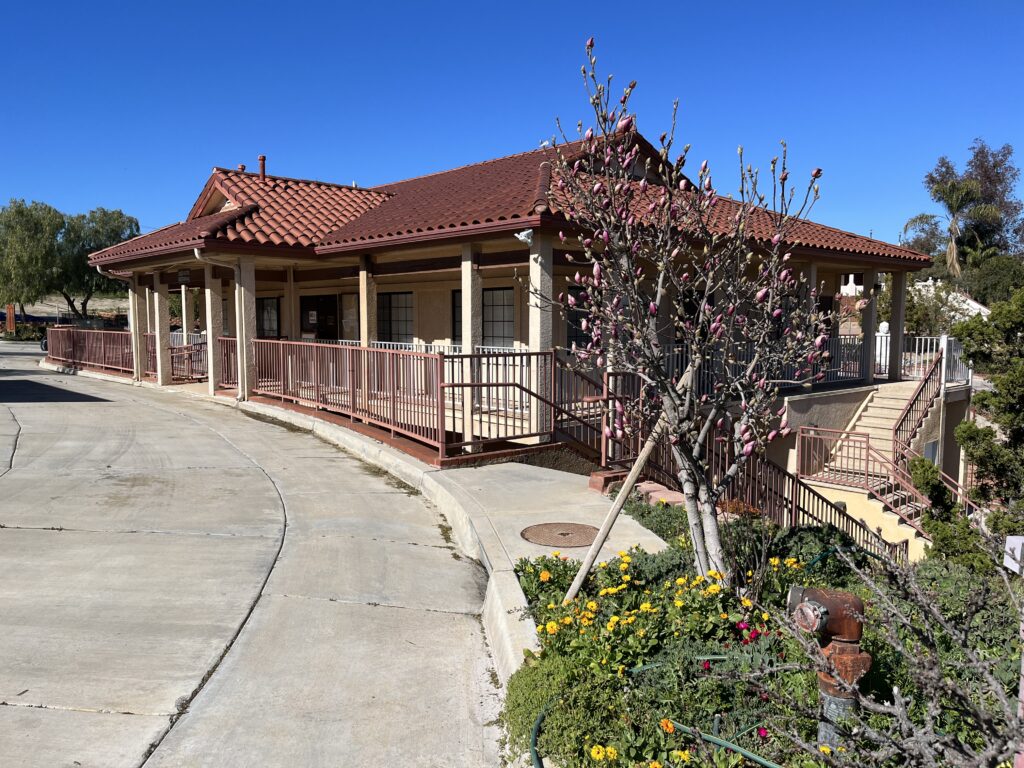
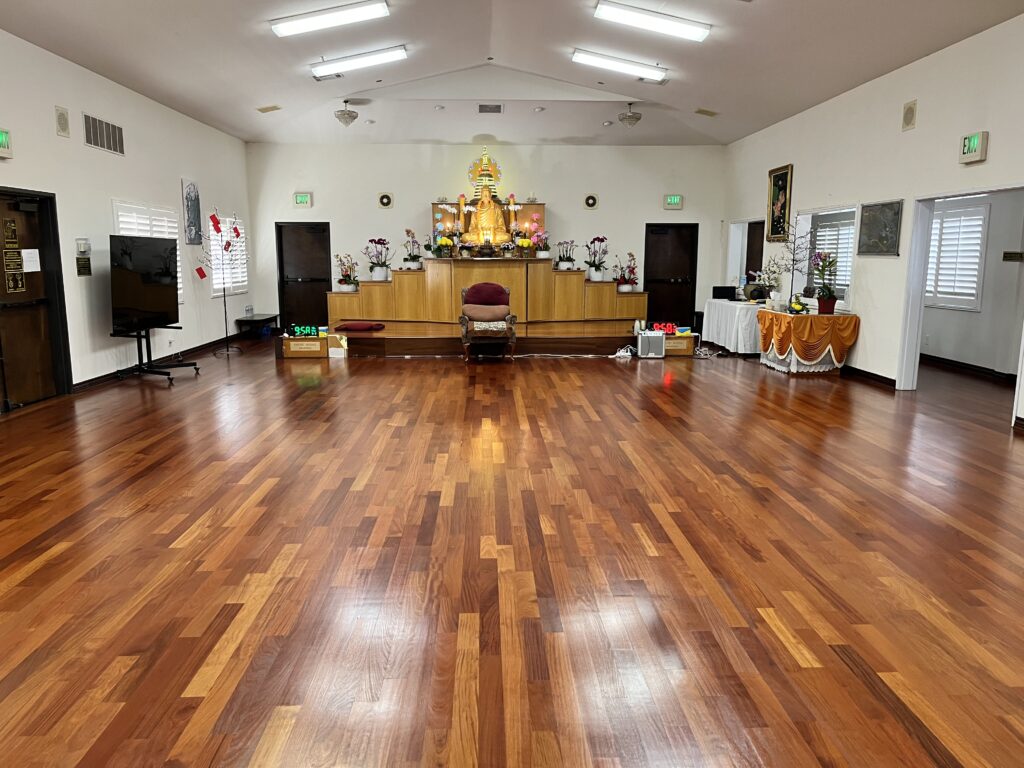
2. Sima and Stupa
According to Bhante Kim Triệu, the constructing of the Stupa traditionally falls under the responsibility of laypeople. However, due to his personal vow, he endeavored to fulfill this vow.
In 1971, while studying at a Burmese temple in Varanasi, India, he saw sacred relics enshrined upon the Buddha’s altar. Learning of their significance and blessings from the temple’s abbot, he longed to possess relics for his own veneration. The temple’s abbot kindly granted him a third of the relics. Unfortunately, these relics were later stolen, instilling a deep concern within him. He vowed that if he ever recovered them, he would construct a Stupa to ensure their safekeeping. This pledge remained firmly in his heart.
As a compassionate and virtuous monk, Venerable Khippapañño Kim Triệu earned the respect and admiration of many. Consequently, numerous monks, nuns, and devotees gifted him precious items. He often expressed, “People value diamonds, gold, and silver, but I treasure the relics of the Buddha and the Arhats.” Over the years, monks, nuns, and devotees presented him numerous relics of the Buddha and the Arhats, including those of Mahāsī. Among these devotees was Sunanda Phạm Kim Khánh, affectionately known as “Uncle Tám Khánh.” Recognizing Bhante Kim Trieu’s virtuous nature and his intention to construct a Stupa for the relics, Uncle Tám Khánh offered a Buddha relic on Vesak Day in 2000, which was originally given to Vietnamese Buddhists by Venerable Narada in 1974.
In 1998, another significant event took place at the Sakyamuni Meditation Center when the late Venerable Master U Kundala from Myanmar led a mindfulness retreat. Venerable U Kundala, Venerable Khippapañño Kim Trieu, and monks from Myanmar, Thailand, Cambodia, and Vietnam came together to chant and perform a Sima consecration ceremony on the land behind the Meditation Hall. According to the Theravada tradition, Sima is designated for monastic activities. The Stupa enshrining the relics was built upon this Sima, transforming it into a space for monastic ordination, robe-offering ceremonies, confession ceremonies, precept recitations, and monastic gatherings.
With a vision to build a Stupa for the relics, Venerable Khippapañño Kim Trieu sought the expertise of layperson Kim-Lien Tran for the design and architect Ngoc-Trai Nguyen for the blueprint. As with the Meditation Hall’s construction, financial constraints and limited human resource contributed to delays. Despite possessing the permit for an extended period, the first stone-laying ceremony for the Meditation Center only took place on November 11, 2001. Construction began in June 2004 and was completed in October 2005. The following years were dedicated to interior decoration, fence building, pathway development from the Meditation Hall to the Stupa, and landscaping.
The relic Stupa stands as a distinctive architectural gem within the Sakyamuni Meditation Center, arguably unparalleled in the United States. Breaking away from the single-layered bell-shaped or pointed dome-like roofs of Myanmar temples, the Stupa at Sakyamuni Meditation Center boasts a three-tiered roof. The largest bottom tier is followed by a smaller middle tier and an even smaller top tier. The three metallic copper-colored tiers contrast strikingly against the vivid blue sky. The Stupa’s octagonal body symbolizes the Wheel of Dharma, while the three roof tiers represent the Triple Gem of Buddha, Dhamma, and Sangha, or the Three Trainings of Precepts, Concentration, and Wisdom. The Buddha’s relics are enshrined within the bell-shaped Stupa at the apex.
A three-level staircase leads to the Stupa’s entrance. Encircling the Stupa’s body is a corridor featuring wooden flooring and transparent glass protection. Three main entrances provide access to the Stupa’s interior, which contains a platform for the relics and walls adorned with paintings of the four sacred sites of Buddhism in India. The Stupa’s base houses scriptures and Buddha statues collected from around the world. Additionally, mementos or gifts offered to Venerable Khippapañño Kim Trieu by devotees are carefully preserved here.
On December 12, 2012, the Stupa’s inauguration ceremony attracted a large number of Buddhists from various regions to pay homage to the relics. This remarkable Stupa serves as a focal point for devotion, fostering a profound sense of reverence and appreciation for the Buddha and the Arhats. The serene atmosphere of the Sakyamuni Meditation Center, accentuated by the Stupa’s unique architecture, offers a sanctuary for spiritual growth where practitioners can engage in meditation and contemplation to deepen their understanding of the Buddha’s teachings.
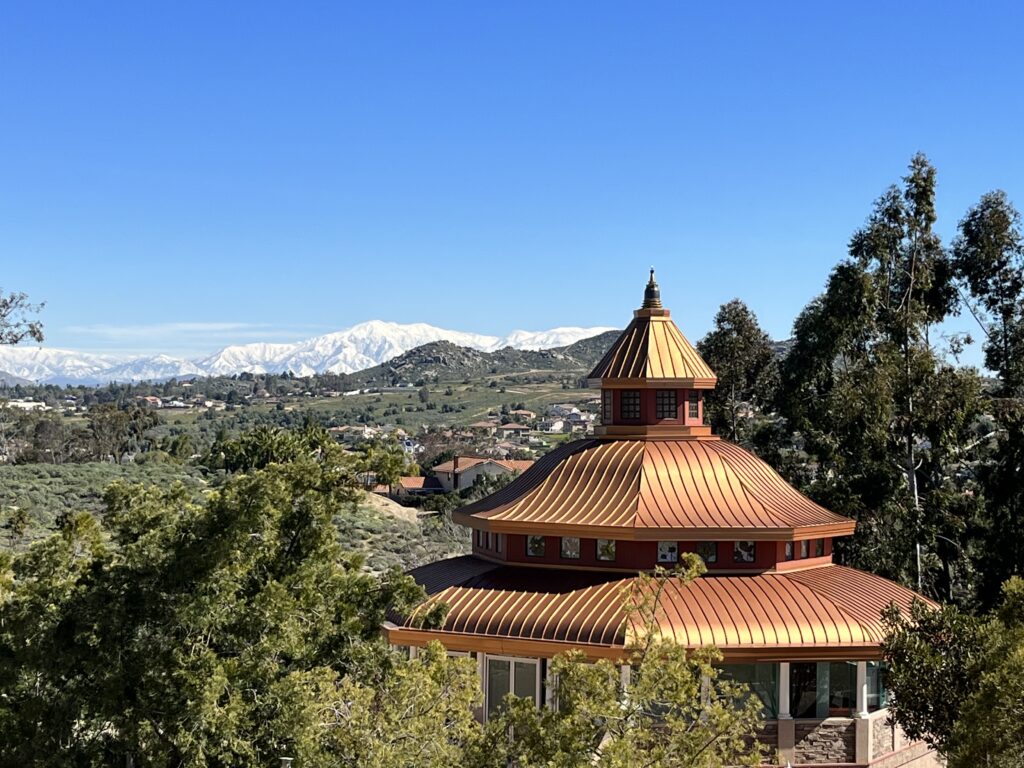
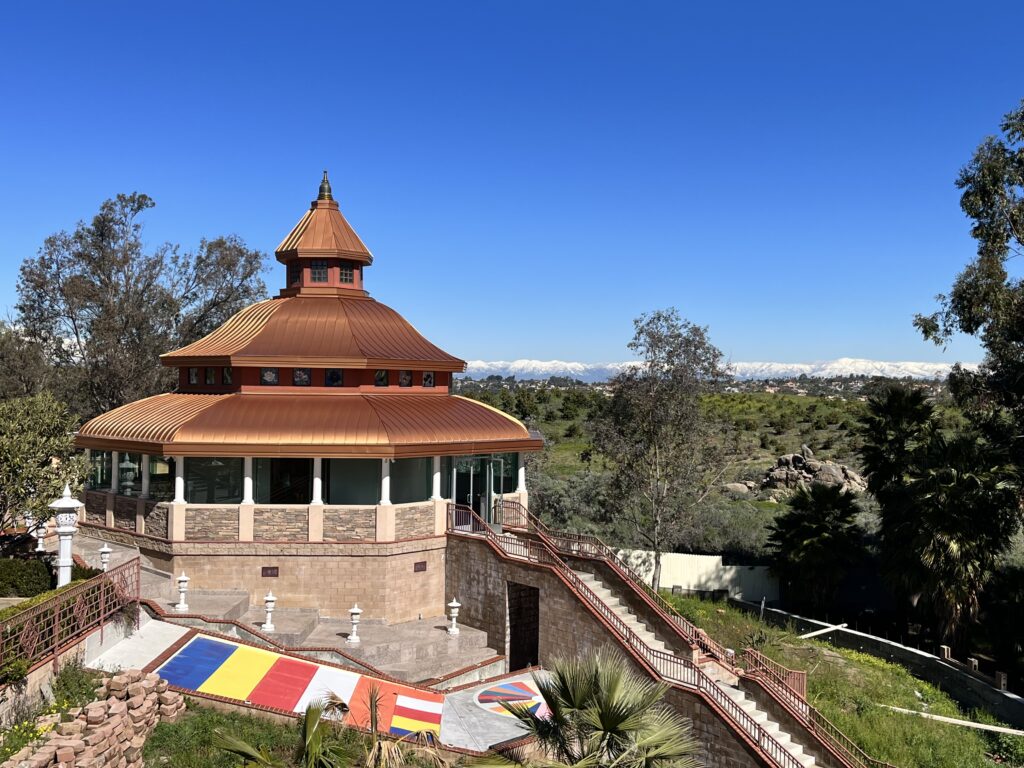

3. The Four Sacred Sites - The Four Inspiring Places
In the Mahaparinirvana Sutra, it is said that before the Buddha entered Nirvana, Ananda expressed his sorrow to the Buddha, lamenting that the world would lose the opportunity to encounter and revere the World-Honored One. In response, the Buddha reminded him of the four significant places in his life:
- Lumbini, where the Buddha was born.
- Bodhgaya, where he attained enlightenment.
- Isipatana, or Sarnath (Deer Park), where he delivered the first sermon, turning the Wheel of Dharma.
- Kusinara, where he entered Nirvana.
“Ananda, these are the four sacred sites that a devout lay follower should visit and pay homage to. Ananda, the devoted monks, nuns, laymen, and laywomen will come with reflection: ‘Here is where the Buddha was born,’ ‘Here is where the Buddha attained the supreme and perfect enlightenment,’ ‘Here is where the Buddha set in motion the unsurpassed Wheel of Dharma,’ ‘Here is where the Buddha attained final extinction, entering Parinirvana.’”
“Ananda, those who, while visiting these sacred sites, pass away with a joyful and faithful mind will, upon the dissolution of the body, be reborn in a happy realm, in the celestial worlds.”
The impact of these four inspiring places is profoundly wondrous. Recognizing that most Buddhists may never have the opportunity to visit the Buddha’s homeland in India, Sakyamuni Meditation Center has enshrined these four sacred sites so that Buddhists from near and far can pay homage and see the symbolic images. The simple yet profound Buddha statues embody the essential stages of the Buddha’s life, encouraging visitors to deepen their faith in the Triple Gem and the wondrous nature of self-realization.

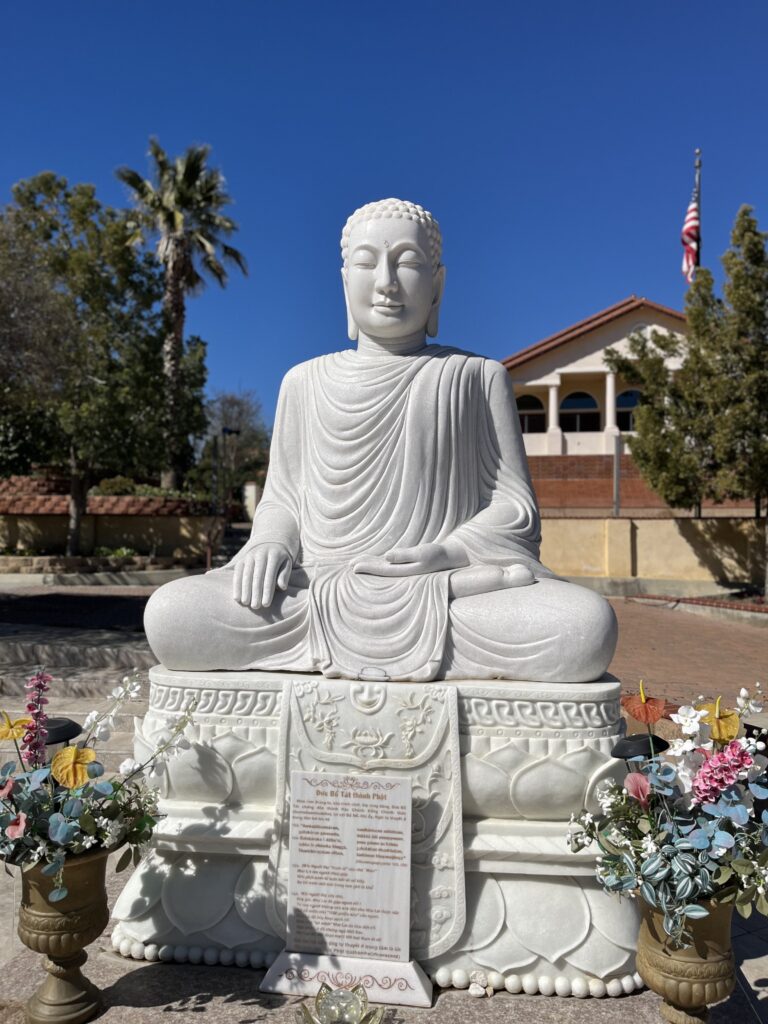

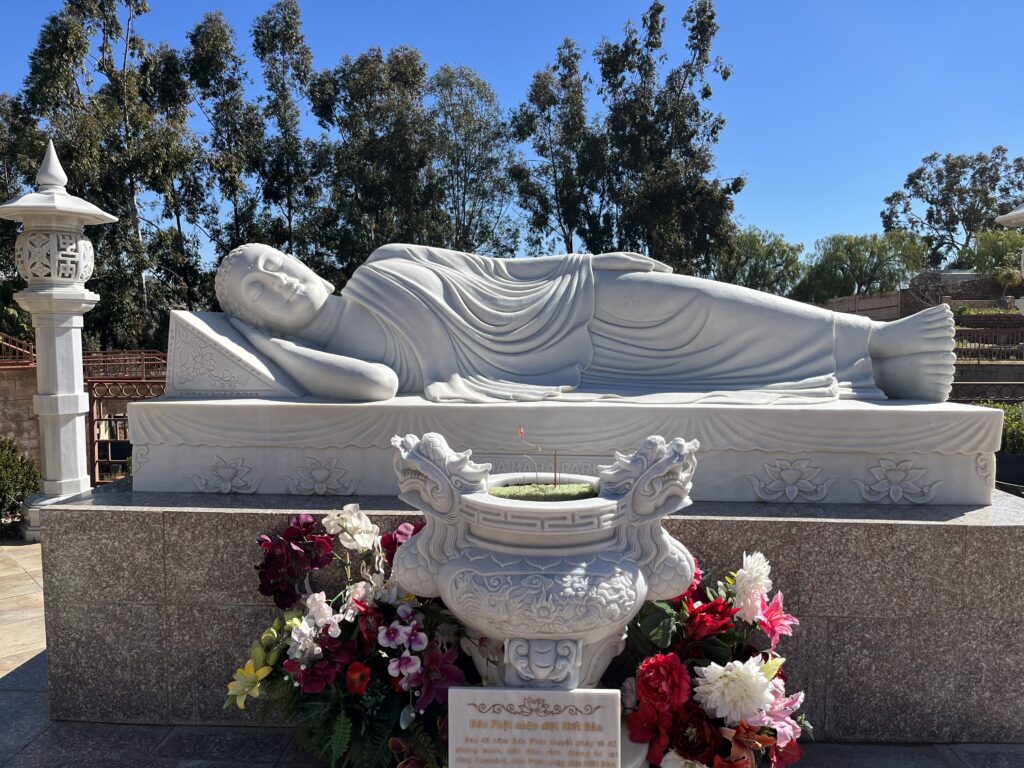
4. Statues of Meditation Masters and Revered Teachers
Nested within the serene grounds of Sakyamuni Meditation Center, near the entrance gate of Sīmā Stupa, statues of the lineage masters and respected teachers of Venerable Khippapañño Kim Triệu stand enshrined:
The Most Venerable Giác Quang: A virtuous monk renowned for his meditation skills. After studying in Nam Vang (present-day Phnom Penh, Cambodia), he established Giác Quang Temple in Bình Đông, Chợ Lớn, Saigon. Venerable Khippapañño Kim Triệu studied here for six years.
The Most Venerable Hộ Tông: A wise and devoted Venerable committed to the Bodhisattva Path. As a pioneer of Vietnamese Theravada Buddhism, he found the Buu Quang and Buu Long Temples, where beautiful and magnificent pagodas now stand.
The Most Venerable and Great Meditation Master Shwe Oo Min: A celebrated meditation master who founded the Shwe Oo Min Dhamma Sukha Tawya Meditation Center, teaching Mindfulness of the Mind (Cittānupassanā) in Myanmar. Venerable Khippapañño Kim Triệu received teachings from him from 1997 until his passing.
The Most Venerable and Meditation Master Mahāsī: Venerable Khippapañño Kim Triệu encountered and studied with him at the Mahāsī Center in Myanmar for six months in 1980 before moving to the United States.
Meditation Master Dipa Ma: An extraordinary lay disciple of Mahāsī and Munindra, her spiritual power and words enable Venerable Khippapañño Kim Triệu to deepen his faith and advance in his Dhamma practice. As the result, she is also considered the spiritual mother of Venerable Khippapañño Kim Triệu.
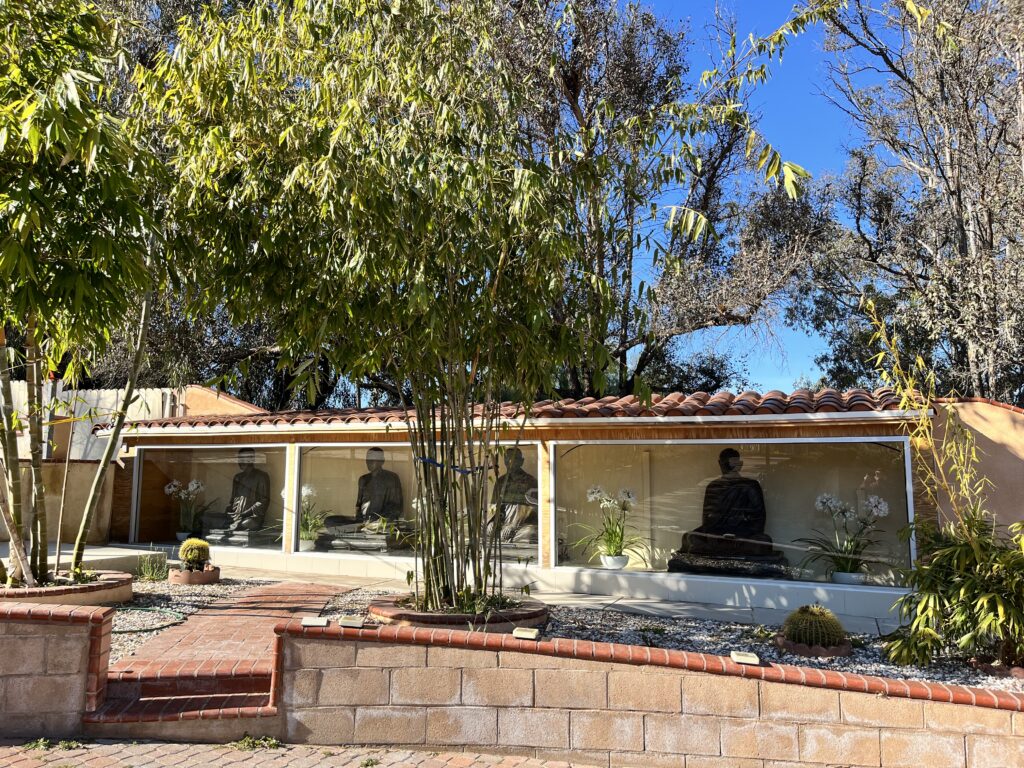

5. Main Shrine and Monk’s Residence
In 2008, the Sakyamuni Meditation Center embarked on a transformative journey, envisioning a harmonious space that would include an additional Main Shrine, a residence for monks, and a parking area to accommodate a growing community. The aim was to create an inviting and serene environment for hosting sacred events, drawing more Buddhists to celebrate and engage in these spiritual gatherings. With a spirit of unity, the meditation center acquired the neighboring property to bring this compassionate vision to life. In May 2014, Buddhists from diverse backgrounds joining hands, generously dedicating their time and energy to constructing the Main Shrine and the monks’ residence. By October, the foundation stone for the Main Shrine was laid, imbued with the spirit of unity.
November 2015 marked the completion of the 2,800 square feet Main Shrine, along with a residential area that included seven rooms for monks, one master room for the Abbot, a master room with three bunk beds, four rooms with one bunk bed, a living room, dining room, and a kitchen. A large septic tank system was installed to manage wastewater, and the electrical system of the new residence was carefully enhanced to ensure safety and efficiency.
As the Main Shrine took form, nature-inspired embarkments were constructed on both sides of the tranquil creek flowing through the Meditation Center. Large Jumbo stone bricks were carefully placed, forming multi-tiered structures that spanned over 4,000 feet in length. The project also involved the addition of over 400 truckloads of soil, contributing to the landscape’s natural beauty.
As part of Sakyamuni Meditation Center’s ongoing transformation, efforts are now focused on further enhancing the grounds, creating a protective barrier for the new parking area, and implementing erosion prevention measures. Additionally, the two-car garage has been repurposed into a storage room for sacred scriptures and a spacious living space for male practitioners.
The Sakyamuni Meditation Center’s lush surroundings have been enhanced by a tranquil Buddhist landscape on the elevated ground adjacent to the Main Hall’s southern side. This serene setting features a rockery and elegant statue of the Buddha, inviting devotees to pause and appreciate its splendor with reverence. A total of 1,250 merit boards adorn the front of the Main Hall, covering an expanse of 700 square feet.

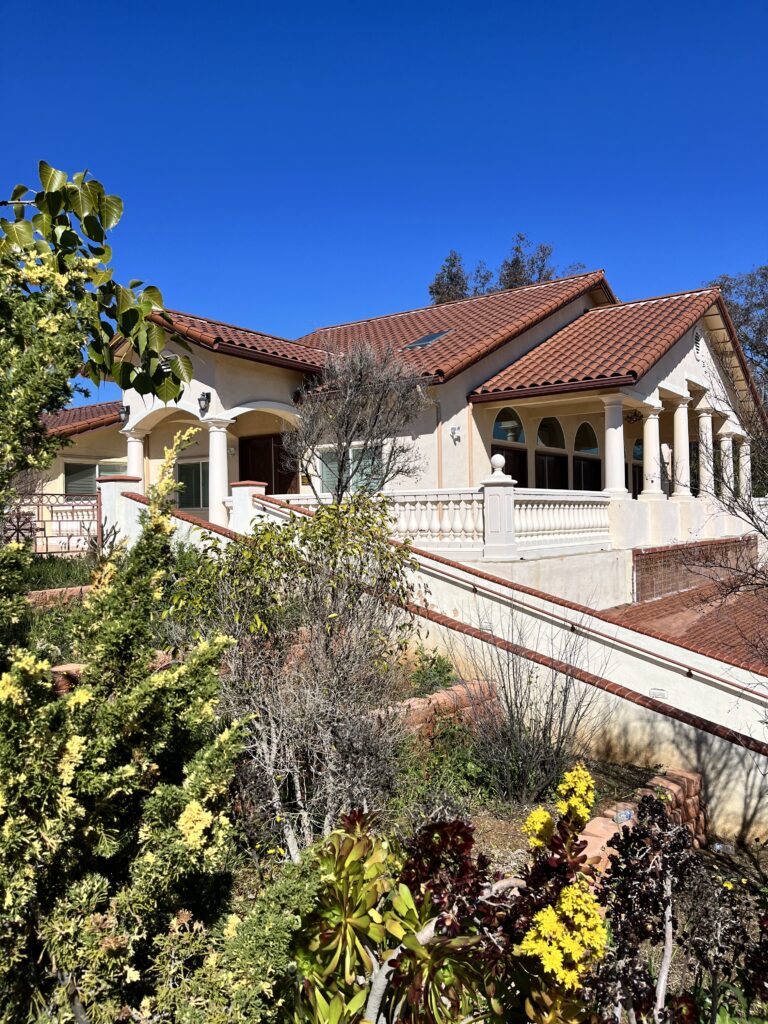
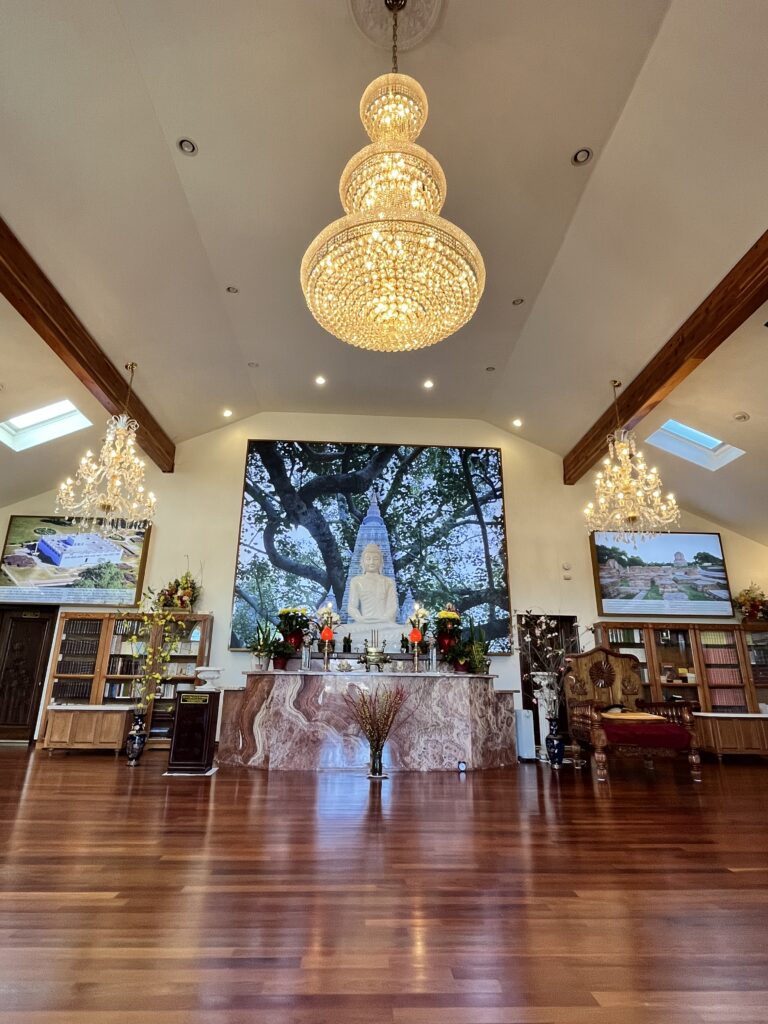
Monks, Nuns, and Devotees
The resident monks and nuns, under the wise guidance of the Venerable Khippapañño Kim Triệu, have been the driving force behind the spiritual path at Sakyamuni Meditation Center since its beginning. Comprised of dedicated practitioners and devoted laypeople, the core members have selflessly and tirelessly contributed their efforts to the Center’s diverse activities, fostering its growth as it continues to spread the Dhamma and enrich the lives of all beings.
We extend our heartfelt gratitude to the compassionate individuals who have strengthened the Sakyamuni Meditation Center with their generosity. This includes numerous families and individuals who have offered their time, energy, and resources to support the Sakyamuni Meditation Center’s well-being and development.
The monks and nuns are also grateful for the regular health and medical benefactors, a group of kind-hearted doctors, pharmacists, and dentists who have graciously provided their expertise and services, ensuring the well-being of the monastic community.
We also acknowledge that there are many more compassionate souls who have supported the Meditation Center in various ways. Our hope is that future benefactors will discover joy and inspiration in contributing to the Center as we continue to grow and thrive together on our shared spiritual journey.
With a heart full of compassion, kindness, and tranquility, we express our deepest appreciation to all who have nurtured and supported the Sakyamuni Meditation Center. May your generosity serve as a guiding light, inspiring others to join us in our collective pursuit of wisdom, inner peace, and the betterment of all sentient beings.
Aspirations
Venerable Khippapañño Kim Triệu, the Abbott of Sakyamuni Meditation Center, once shared these profound words with his devoted practitioners:
“In my eyes, all is reliant upon the conditions that foster the Dhamma. Should someone approach with a genuine heart and the karmic connection to follow the path I have embarked upon, continuing the aspirations I hold dear for the five Dhamma centers – Jetavana Vihara Temple, Sakyamuni Meditation Center, Mahasatipatthana Meditation Center, Tam Phap Meditation Center, and Ananda Meditation Center – I pray they will always remember the two guiding principles that have shaped my life: to preserve the traditional discipline of a Theravada Buddhist meditation center and to sustain the propagation of the Dhamma of the Four Foundations of Mindfulness.”
The greatest joy and consolation for Venerable Khippapañño Kim Triệu’s in the final stages of his spiritual journey in a vast country where Buddhism is not widely spread, is seeing the progress of the monks, nuns, and lay practitioners in both Dhamma studies and practice, especially with their growing deep faith in the Triple Gem. He hopes that these pure and accomplished lay practitioners will work in harmony with the monastic community across various locations to serve the Buddhist cause, guided by the inspiring principle:
“Monks pull, lay practitioners push the Dharma Wheel.”
.
